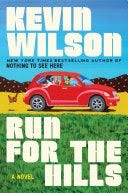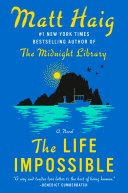Two weeks ago, the New York Times book review on its cover showed a photograph of Mark Twain in front of his childhood home in Hannibal, Missouri, with the tagline “Ron Chernow‘s new biography of the “father of American literature ‘misses its mark.’’
The review by Dwight Garner acknowledges that Ron Chernow “is probably, alongside Walter Isaacson, the best known biographer of his time,” but that doesn’t save him from a lot of criticism.
Gardner says that Chernow made a number of mistakes, not the least of which is to write a 1174 page biography. Second, he feels it doesn’t devote enough coverage to Twain’s childhood:
“[T]he crucial moments in most biographies tend to arrive early, when a life begins to deviate from those around it – those moments when the future forks, when there’s a sheep-versus-goat separation. The biggest mistake Chernow makes is to blow through the vital first third of Twain‘s life in a fleet 150 or so pages.”
This includes the years when Twain was living in slave-owning Hannibal, Missouri, where Twain moved when he was four years old and which gave rise to The Adventures of Tom Sawyer and The Adventures of Huckleberry Finn. It also gave short shrift to his years as a riverboat pilot.
Garner also complains that Chernow spends far too much time discussing the lives of Twain’s children who either died young or “suffered innumerable, medical and professional setbacks, “distracting from the main narrative in the biography. Gardner notes that the inclusion of Twain‘s behavior with a “harem” of young girls that he called his “Angelfish” is “disturbing and sobering.”
He ends his review:
Twain was no special fan of biographies. He said that they are “but the clothes and buttons of a man - the biography of the man himself cannot be written. “Chernow‘s biography has clothes and buttons galore, but misplaces the man. The whip of Twain‘s wit is here, but it’s laid out like slides in a biology class.
Ouch.
I applaud the New York Times for printing a review that is less than stellar as I sometimes suspect that it picks books that will receive a positive review and sell copies of those books. But putting a bad review on the cover struck me as unnecessary.
Then I began to think of books that in my view do not live up to expectations, which is my kinder way of saying “misses the mark.” The first is “Run for the Hills,” by Kevin Wilson.
This is Wilson’s follow up novel to his highly successful “Nothing to See Here,” which employed magic realism. The novel involved two young children, whom Lillian, a former college roommate of their step-mother Madison, has been asked to take care of for a summer and keep out of the way of their step-father, a Senator running for reelection. When the children become upset or angry, they spontaneously burst into flames. You would think that this device would seem implausible and ridiculous, but in the hands of a really good author, we develop a sympathy for the children and a desire to see them healed of their malady.
In an interview, the author said:
“Since I was a kid I’ve been obsessed with spontaneous human combustion,” Wilson told the New York Times. “Sometimes I’d be afraid I might burst into flames and other times I wanted to be a human torch. I wanted to manifest my anxiety physically. But what I’m always trying to figure out with my writing is, how can I create a story where people survive dark things? I don’t want anyone to ever get hurt.”
“Run for the Hills” was reviewed in the same issue of the New York Times Book Review as the one that panned Ron Chernow’s biography of Mark Twain. “Run for the Hills” is a road trip told from the point of view of a 32 year-old woman named Madeleine (Mad) Hill, who operates an organic farm in Tennessee. A stranger approaches her house in a red PT cruiser, and tells her that he is her half-brother from a father who had abandoned his family, as in fact he had abandoned hers.
Her brother Rube has hired a private detective and has found other families that their father has started and then after having a child, left. He is on a mission to collect all the children and drive to California to confront the man who left them and get some answers. It became clear to me as the novel progressed that it was mostly about the siblings becoming a family. I was not sure whether they would ultimately find their father or if they did, whether he would have any good explanation for having left them and not having contacted them after he left. The book reminded me of the film “Little Miss Sunshine,” where a rag-tag family takes a VW bus to LA for a beauty pageant for their youngest, Olive. The film wasn’t really about whether they would make it to the pageant in time or whether Olive would win.
Bobby Finger, who reviewed “Run for the Hills,” says “ if the ease with which Rube is able to persuade his siblings to join him raises eyebrows, the journey is otherwise so swift and delightful that the story never collapses under the weight of implausibility.”
He ends his review by saying that the book is a
“touching and generous romp of a novel, a sort of lighthearted family heist in which the anticipated grift is simply a meeting (or confrontation?) with the character’s father.
Does the book “miss the mark?” If you had read only “Nothing to See Here,” you might expect, as I did, a dark comedy with finely drawn characters and a bit of magic realism to act as a metaphor. If you removed the bursting into flame part from “Nothing to See Here,” you would be left with a novel about an egotistical father wanting to keep his kids away from his campaign. It might be funny, but the father wouldn’t bear the guilt of his children’s “illness,” and Lillian wouldn’t be confronted with how to love two kids who are abnormal and frightening. That’s the dark part.
“Run for the Hills” does have a dark side as well—a father who abandons multiple families for no discernible reason. But because the narrative is filtered through his daughter, Mad, it’s hard to develop any sympathy for a man who may well be as damaged as kids who burst into fire. I enjoyed the book, but I was disappointed.
At the other end of the spectrum is an author who successfully uses magic realism, and then in the next novel, takes it over the top to a point where it is simply confusing and detracts from the novel. This is the case with Matt Haig’s book “The Life Impossible,” which followed his acclaimed “Midnight Library,” about a magical library where Nora Sneed takes out multiple books and falls into each story, trying on different paths for herself.
In “The Life Impossible,” Haig creates a magic ocean, the ability to read minds and affect other people’s behavior and an alternate universe called La Selencia. It takes place on Ibiza, where Grace Winters, a retired math teacher from the UK, has inherited a cottage from a former colleague.
Grace decides to go to Ibiza to investigate what happened to her friend. I know there are folks who really like this novel, but I thought all the magic realism made it extremely difficult to follow. She swims in the ocean and soaks up the magical powers from a mysterious light beneath the ocean called La Presencia. Haig throws in plot lines involving developers, Grace‘s plan to foil them, a magic goat, and Christina’s daughter.
It turns out Haig almost died in a drug incident working in a nightclub on Ibiza in 1999, which doubtless gave him some of the background for “The Life Impossible.”
Haig is apparently a kind of self-help icon. In an interview about his earlier book called “The Comfort Book,” he said, “ I have never written a book that will be more spoofed or criticized.” According to Haig “people who are at all snobby about self-help books, inspirational quotes, Instagram, sunsets, cats” will hate it.”
Although Grace believes that Christina might have been murdered by the developers, it turns out that Christina, also relying on La Presencia’s powers, had foreseen her own death and chosen to disappear through a worm hole into Selencia, the world of la Presencia. This was too much for me. Don’t give me a story about discovering how someone died and then have them whisk off deus ex machina to another world.
I admit when I read a book for the first time, I’m reading for the plot to see what happens. And the plot resolution in this book is unsatisfying and incomplete. Perhaps if I re-read this book, I could focus on Grace and her developing sense of purpose in foiling the developers and befriending the aging sailor who shows her the magic water. But if Haig truly is a self-help guru, I believe his story would have been better served by allowing Grace to find her own way in a new country rather than depend on magic.
In my book group this week, we discussed “There Are Rivers in the Sky,” by Elif Shafak. Many of us questioned the idea that the same drop of water fell on each of the characters in different countries and centuries as a uniting force (how exactly it united them was not clear.) (Shafak includes a chart at the end of the novel explaining where each drop of water landed and when.)
One member asked why we couldn’t accept this theory as magic realism. My response was that I believe magic realism should play an integral part in the plot. In “Midnight Library” and “Nothing to See Here,” the story depends on the magic. But Shafak’s novel did not depend on a migrating drop of water to play a part in the story. It was the author’s magical theory, but none of the characters were aware of it or affected by it.
From an over 1,000 page biography of Mark Twain to two books that followed successful incorporation of magic realism to less successful results, we can’t expect every author to follow a great book with an even greater one. The pressure to publish is just too great.
*
Dear Readers: I love to hear from you and promise to answer any comments. If words fail, please click the heart so I know you are there!









Christine's words never fail to disappoint! A wonderful way to start a rainy and gloomy day! Vivian Shipley
Thank you, Christine. Interesting reflections on the experience of unfulfilled expectations in our reading lives. I zoomed right in on the failure of the Twain biographer to examine, with greater care, Twain's (Clemens') early life. My mother and I took a trip to Hannibal, MO, in 1981, and I was happy to discover that the town was all dirt roads and dust, complete with a "drug store" that sold more fried catfish than drugs, and the meal was served at small tables covered with soiled checker tablecloths. The floor was covered with sawdust. Those days are most certainly long gone, but I'd like to think that a biographer would want to linger on a world which so deeply influenced young Samual. Back in 1981, as my mother and I pulled out of Hannibal, I looked high up on a cliff and spied a sculpture of Huck and Tom, ever in their youth, overlooking the Mississippi River.